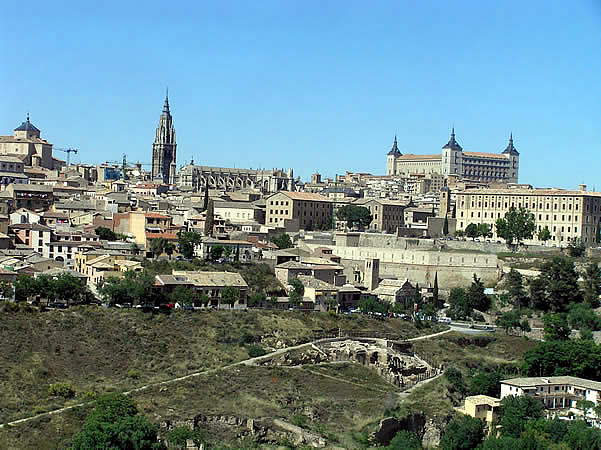Catalonia is a region of Spain located in the northeastern end of the Iberian Peninsula. This region to the north is bordered by France and Andorra, while to the east and south it overlooks the Mediterranean Sea with about 580 km of coasts, finally it borders with the Valencian Community to the south, and Aragon […]
Category: Spain
Segovia has a purely continental climate with harsh and cold winters, the summers instead are rather short, hot and rather dry. This type of climate is due to the altitude in which the city is located (about 1,000 meters above sea level), and to its position in the center of Meseta and far from the […]
Segovia is a town of 55,000 inhabitants located 1,000 m. above sea level. The city is located at the northwestern base of the Sierra de Guadarrama, located between the Eresma and Clamores rivers. The city was important since Roman times, when it was known by the name of Segobriga. It became part of the Roman […]
The climate of Burgos: when to go to Burgos
Burgos is over 850 meters high in the northern Meseta, the city has a temperate continental oceanic climate. Winters are cold and windy with minimum temperatures that drop even below freezing. Summer is a hot season, but rarely excessively hot due to the altitude of the city. July is the hottest month with an average […]
Burgos: a majestic Gothic cathedral
Burgos is a splendid historic city of 170,000 inhabitants. It is located in northwestern Spain, in the Castile and Leon region. The history of Burgos begins in the year 884, when Diego Porcelos, second Count of Castile, repopulated the area with the intention of forming a bastion against the continuous Arab incursions. From this period […]
The climate of Avila: when to go to Avila
Avila is located in the central-northern part of the Spanish Meseta at over 1,100 meters above sea level. Due to its height, Avila has a purely continental climate with harsh winters and frequent snowfalls during the winter, while summers are rather short, hot and dry. A CLIMATE WITH COLD WINTERS AND WARM SUMMERS The climate […]
Avila (50,000 inhabitants), one of the jewels of medieval Spain, is located at 1,128 m. above sea level, in the region of Castile and Leon, in a rocky area on the buttresses of the Sierra de Guadarrama and Sierra de Gredos on the right bank of the Adaja river, a tributary of the Duero. Founded […]
Castile-León (Castilla y León) is, by extension, the largest Spanish region. It is located in the north-western area of Spain, has no access to the sea and is bordered to the west by Portugal and the Spanish region of Galicia. To the north with Asturias and Cantabria, to the east with the Basque Country, Aragon […]
The climate of Toledo: when to go to Toledo

Toledo has a mixed climate between the Mediterranean and continental climate with relatively cold winters and very hot and dry summers. The daily temperature differences are quite high. Summer temperatures can sometimes exceed 40 ° C and in winter they can drop a few degrees below zero. The average maximum summer temperatures are very hot […]
Toledo: the historical capital of Spain

Toledo is a town of 78,000 inhabitants which is located at 454 m. above sea level, about 70 km south of Madrid. The city is crossed by the Tajo (Tagus) river that surrounds it for two thirds, while the historic center is located on the side of a hill under which the Tajo (Tagus) passes. […]
Castile-La Mancha: the land of Don Quixote
Castile-La Mancha (Castilla-La Mancha) is a region of central Spain born from the division of the old historical region of Castilla la Nueva into two new entities: the Comunidad de Madrid and Castile-La Mancha. The region that has Toledo as its capital is made up of the 5 provinces of Albacete, Ciudad Real, Cuenca, Guadalajara, […]
The city of Zaragoza has an arid continental Mediterranean climate with cool, dry winters and rather hot and dry summers. Sometimes in winter and early spring a strong cold and dry wind blows from the north-west, similar to the Mistral blowing in the Rhone valley and the Bora blowing in the Balkans. This wind causes […]
Zaragoza: the Mudejar style of Aragon
Zaragoza has about 650,000 inhabitants and is one of the most important cities in Spain. The capital of Aragon, Zaragoza is located halfway between Madrid and Barcelona from which it is about 300 km away. The city is located 200 meters above sea level and is crossed by the Ebro river. The name of the […]
Aragon is an ancient independent kingdom of the Iberian peninsula, which in 1479, by marriage, was united to the crown of Castile. The region, one of the least densely populated in Spain, is bordered by France to the north, while to the east it borders with Catalonia, to the south with the Valencian Community and […]
The climate of Madrid: when to go to Madrid
The climate of Madrid is a mixed climate between the Mediterranean and the continental, the city is located over 650 meters above sea level in the center of Meseta. The climate of Madrid is defined by the inhabitants themselves among the worst climates in Spain, in fact there is the saying that describes the climate […]
